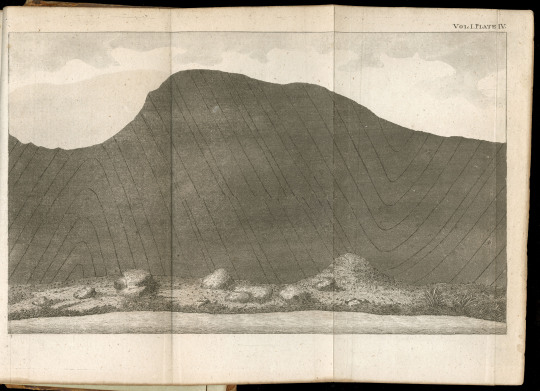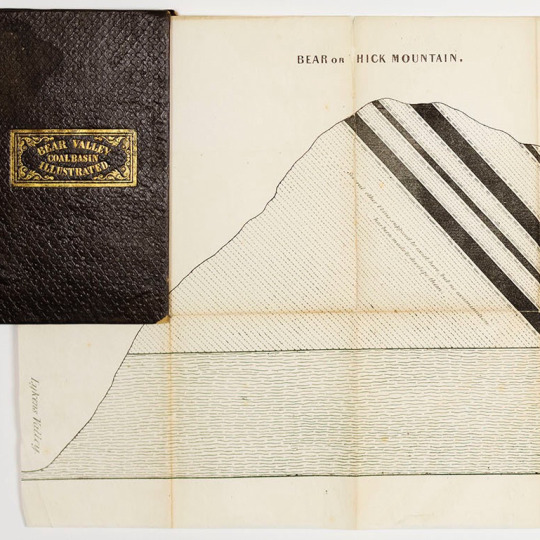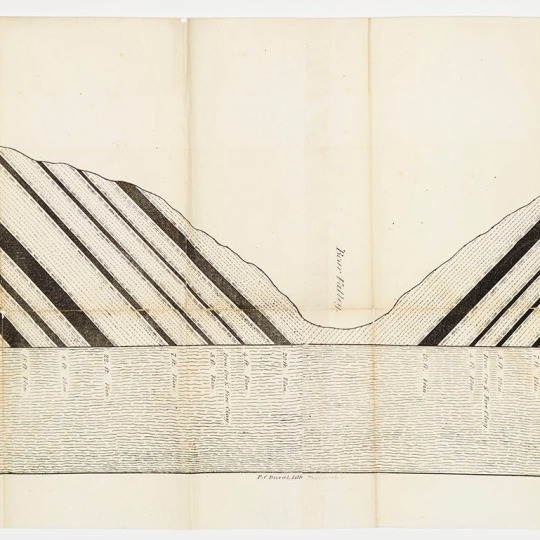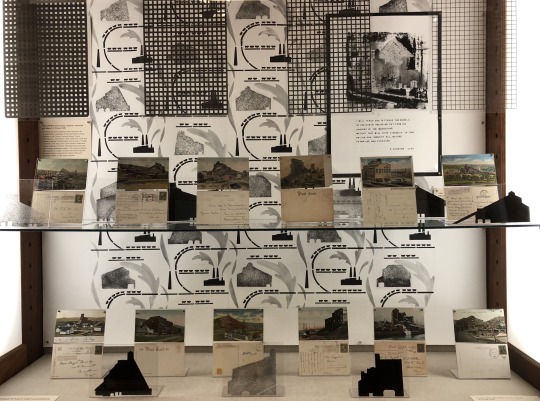#seeingcoal
Explore tagged Tumblr posts
Text


"Ninety miles north of Philadelphia, layers of anthracite coal undulate underground, pushed into steep folds by tectonic action. These are the Coal Measures of the Anthracite Coal Fields of Pennsylvania. They formed 300 to 320 million years ago, and gave their name to the Pennsylvanian epoch in the geologic time scale."
This, and more, on view in our exhibition Seeing Coal.
Samuel H. Daddow and Benjamin Bannan. Coal, Iron, and Oil; or, the Practical American Miner (Pottsville, 1866).
53 notes
·
View notes
Text

"The result of this physical inquiry is, that we find no vestige of a beginning, -no prospect of an end." -James Hutton
James Hutton (1726 - 1797) is considered the founder of modern geology. A Scottish farmer and naturalist, Hutton intuited the immense scale of Earth’s age through observation, upending the more common view of a young Earth. He was the first to articulate the awed sensation of beyond-human scales of time.
Two hundred years later, the writer John McPhee gave it a name: Deep Time.
From our current exhibition, "Seeing Coal."
James Hutton. Theory of the Earth, with Proofs and Illustrations (Edinburgh, 1795).
#Seeing Coal.#James Hutton. Theory of the Earth#seeingcoal#extractionPA#anthracite#coal#geology#deeptime#LCPexhibits
41 notes
·
View notes
Text




"The energy needs of the Industrial Era fueled the search for underground coal. Coal was mapped and surveyed so that it could be located, dug up, and consumed. Lacking advanced “seeing” technology such as GPS mapping and LiDAR, 19th- and 20th-century surveyors’ work is based on direct but coarse-grained observational data. Lack of specificity invites us to imagine underground coal as something else: a co-habitant of Earth, whose material and location are primarily unseen."
The final day to view #SeeingCoal is this Friday! Stop by this week, or visit seeingcoal.librarycompany.org
Report to the Legislature of Pennsylvania, Containing a Description of the Bear Valley Coal Basin (Harrisburg, 1839).
15 notes
·
View notes
Text


"Observing nature closely is something humans do… naturally. Our desire to see the world in greater detail helped spur developments in print technologies that brought our observations to the page."
There is still time to see our exhibition Seeing Coal, now open in our gallery and at seeingcoal.librarycompany.org
Image: James Sowerby. British mineralogy. (London, 1804-17.)
14 notes
·
View notes
Text

Breakers in front of breakers in front of breakers.
What's going on in this case, and what about those grids?
Stop by and talk with Seeing Coal curator Andrea Krupp to find out or head to: seeingcoal.librarycompany.org
"The Curator is In," every Monday at 12:00, or by appointment.
5 notes
·
View notes
Photo

"Coal is still a primary source of energy across the globe, but now it stands for the opposite of modernity. Aware, as we are, of the disastrous effects that extracting and burning coal has on the environment, coal has been practically banished from the visual/cultural landscape. Out of sight and out of mind? But coal is full of portent. It is a bellwether material of the Human/Nature/Time relationship which deserves our attention."
In advance of the exhibition 'Seeing Coal - Time, Material and Scale,' LCP Conservator and exhibition curator Andrea Krupp wrote about her research. Read the full essay here
Image: George Lehman, Coal Mine at Mauch Chunk (Philadelphia: C.G. Childs, ca.1837). Lithograph.
13 notes
·
View notes
Text


"The rocks are, indeed, full of the monuments of time, but we have not yet learned to fully decipher them." - J. Donaldson.
This item, and more, on display in our exhibition #SeeingCoal
seeingcoal.librarycompany.org
From: J. Donaldson. The geological staircase: containing the steps of rocks and floors of alluvium. London: James Cornish, [1855].
19 notes
·
View notes